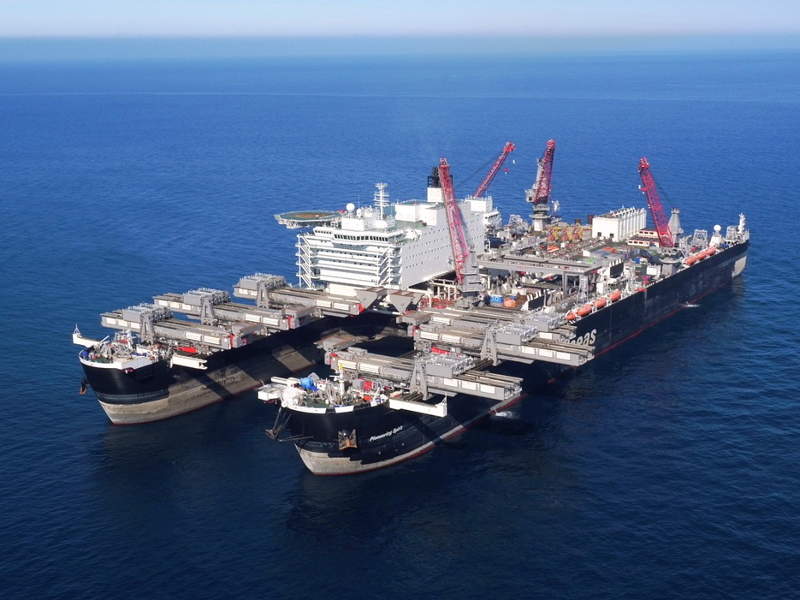

TurkStream pipeline is an export gas pipeline currently under construction across the Black Sea from Russia to Turkey, with an extension to Turkish border.
The first section of the gas pipeline will serve Turkish consumers, while the second section will ensure reliable gas supplies to consumers in the south and south-east regions of Europe.
The transit-free pipeline will have the throughput capacity of 31.5 billion cubic metres (bcm) of gas a year and is scheduled to become operational by the end of 2019.
It is expected to enhance the reliability of gas supply to Turkey, which is historically one of the major consumers of Russian gas.
TurkStream gas pipeline project details
Gazprom and Botas Petroleum Pipeline Corporation signed a memorandum of understanding (MoU) in December 2014 for the construction of a new subsea gas pipeline through the Black Sea.
Gazprom then submitted a notice request to commence front-end engineering and design (FEED) for the offshore section of the pipeline in January 2015.
Turkey issued a permit on engineering surveys for the subsea section of the pipeline project in June 2015.
Gazprom subsequently received first permits for the pipeline project from the Turkish authorities in September 2016, and Russia and Turkey signed an inter-governmental agreement for the project the following month.
The subsea section of the pipeline will have a length of more than 900km, extending from the Russkaya compressor station in the Krasnodar Territory to the Turkish coast via the Black Sea.
The onshore section will enable gas to travel up to Turkey’s various boundaries with neighbouring countries.
Each string of the new gas pipeline will transfer 15.75bcm of gas a year to Turkey and its border with Greece, where a new delivery point will be created.
TurkStream pipeline construction
Construction began on the first section of the TurkStream gas pipeline in the Black Sea off the coast of Russia in May 2017.
The pipe-laying works are currently being carried out by the Allseas-owned Audacia pipe-lay vessel, which will also be deployed for pulling pipes through micro tunnels.
TurkStream is the first 32-inch diameter pipeline to be laid at deep depths exceeding 2,000m. The walls of the pipeline are made of 39mm high-quality carbon manganese steel.
It is also covered with an external coating of three-layer polypropylene for resistance against corrosion. The pipeline will be capable of resisting an internal design pressure of 300bar.
The pipe joints are welded onto the main string aboard the vessel. The weld is then tested and coated, before the string is placed in the water.
The pipes expected to be laid in shallow waters are covered with concrete coating up to 8cm thick for additional stability.
Construction works for the gas pipeline in the deep-water zone will be performed by Pioneering Spirit, which is the world’s biggest construction vessel.
The vessels will operate continuously in order to lay approximately 3,000m of pipeline a day.
Contractors involved with the TurkStream pipeline project
Gazprom’s wholly owned subsidiary South Stream Transport is currently responsible for the construction of the offshore segment of the gas pipeline.
South Stream Transport placed a contract with Allseas Group to lay the first string of the TurkStream pipeline’s offshore section in December 2016. The contract also includes an option to carry out the laying of the second section.
A deal for the construction of the second section was signed between South Stream Transport and Allseas in February 2017.
United Metallurgical Company (OMK) was selected by Gazprom to deliver the pipes for the project.


